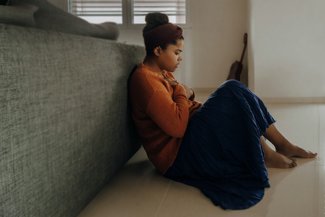Girls and young women
Suicides of girls and young women have increased at startling rates, with those under 24 seeing the largest increase in suicide rates since records began. So it is encouraging that the Suicide Prevention Strategy specifically identifies children and young people as a priority group, and acknowledges the particular risks among young women.
Girls and young women face additional and specific complexities in relation to their mental health. The new Unseen Signals campaign from CALM, the Campaign Against Living Miserably, highlights the ways in which stereotypes can make it harder for them to seek help. Their research found that:
- One woman under the age of 25 in the UK takes her own life every two days
- Young women in crisis worry about stereotypes preventing their access to help, and many have experienced shocking dismissals from the various services they reached out to for support, with:
- 27% told it could be hormonal
- 20% reporting being asked if they were on their period
- 33% asked if they were overthinking things
- 79% of women under 25 who died by suicide had previously been assessed as ‘low risk’
To address these levels of discrimination and stereotyping, all mental health support must be both age- and gender- responsive. The strategy identifies ongoing work in this area, and states that “further bespoke support may be needed to respond to particular circumstances and experiences of some children and young people.” To prevent young women and girls falling through the gaps in services or left to reach crisis point, it is essential that government ensures all support is gender-, age- and culturally-responsive.



